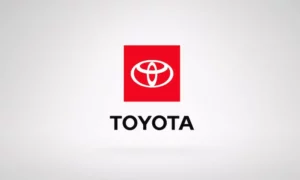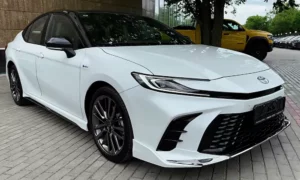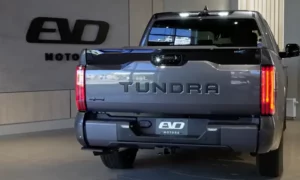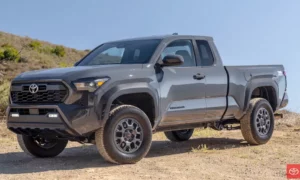Ever wondered where your Toyota Corolla comes from? That reliable car in your driveway actually has quite the international passport. The Corolla isn’t just assembled in one factory—it’s the product of a sophisticated global manufacturing network spanning multiple continents.
Toyota’s approach to building the world’s best-selling car nameplate involves strategic production sites designed to serve regional markets efficiently. Let’s take a behind-the-scenes tour of where the Toyota Corolla is manufactured and what makes each production hub special.
Toyota Corolla’s Manufacturing Origins
The Toyota Corolla’s manufacturing story began in Japan in 1966 at the iconic Takaoka Plant in Aichi Prefecture. This facility pioneered what Toyota called the “High Compact Car” concept, pairing a newly developed 1,100cc K-type engine with a lightweight chassis. By 1983, Toyota had produced an impressive 10 million Corollas, with about half staying in Japan and half exported worldwide.
The early success prompted Toyota to expand production beyond Japan’s borders, setting the foundation for what would become one of the most globally manufactured vehicles in automotive history.
Current Corolla Production Facilities Worldwide
Today, the Toyota Corolla is manufactured in 16 plants across 13 countries, with a combined annual production capacity exceeding 1.5 million units. Here’s a comprehensive breakdown of where Toyota Corollas are currently built:
North American Production
The North American market receives Corollas from three primary facilities:
Toyota Motor Manufacturing Mississippi (Blue Springs)
- Opened in 2011
- Produces approximately 170,000 Corolla sedans annually
- Employs over 2,000 workers
- Implements the Toyota New Global Architecture (TNGA)
- Sources 92% of parts locally within North America
Toyota Motor Manufacturing de Guanajuato (Mexico)
- Newer facility opened in 2019
- $1.5 billion investment
- Annual capacity of 200,000 units
- Primarily serves Latin American markets
- Specializes in the latest generation Corolla sedan
Mazda Toyota Manufacturing USA (Alabama)
- Joint venture facility
- Produces the Corolla Cross SUV variant
- Implements hybrid technology with Mazda’s input
- Represents Toyota’s newest North American manufacturing footprint
The Blue Springs, Mississippi plant underwent a $1.2 billion upgrade to accommodate the TNGA platform for the current generation Corolla. This facility is particularly important for U.S. market vehicles and employs innovative manufacturing techniques including 527 automated guided vehicles that reduce human transport requirements by 73%.
Japanese Production
Japan remains the engineering heart of Corolla production with three key facilities:
Takaoka Plant (Aichi)
- The original Corolla production site
- Specializes in Corolla sedans and hybrids
- Uses advanced laser welding techniques
- Focuses on GA-C platform production
- Sets quality benchmarks for global facilities
Tsutsumi Plant (Aichi)
- Manufactures the E210 hatchback variant
- Features solar-powered assembly lines
- Produces alongside Prius models
- Implementation hub for new technologies
Miyata Plant (Fukuoka)
- Specializes in hybrid drivetrain components
- Supplies 78% of European Corolla hybrids
- Houses clean rooms for Power Control Unit assembly
- Maintains a 99.999% defect-free rate for electronic components
These Japanese plants collectively employ around 12,000 workers and maintain a vertical integration rate of 83% for key components, serving as the technological foundation for global Corolla production.
European Production
Europe’s Corolla manufacturing focuses heavily on electrified models:
Burnaston Plant (UK)
- Toyota’s first non-Japanese hybrid production site
- Produces 180,000 Corolla hybrids annually
- Recently manufactured Toyota’s five millionth UK-built car (a Corolla)
- Transitioning to 100% hybrid output by 2024
- Features specialized 2.0L Dynamic Force engines for European driving preferences
Kolín Plant (Czech Republic)
- Produces 75,000 Corolla Cross models annually
- Shares platform technology with Peugeot 108
- Serves as a key distribution hub for Eastern European markets
The UK’s Burnaston facility has become particularly important for Toyota’s European strategy, with its operations supporting approximately 3,200 supplier jobs and contributing £2.1 billion annually to the Midlands economy.
Asia-Pacific Manufacturing
The growing Asia-Pacific market is served by several specialized facilities:
Toyota Motor Thailand (Chachoengsao)
- World’s largest Corolla Cross producer
- Exports 60% of production to ASEAN countries and Oceania
- Specializes in SUV variants with market-specific features
Toyota Kirloskar Motor (India)
- Manufactures Corolla Altis hybrids
- Features localized suspension tuning for challenging road conditions
- Serves as a production hub for South Asian markets
Toyota Motor Vietnam (Vĩnh Phúc)
- Assembles Corolla Cross and Altis models
- Uses Complete Knock-Down (CKD) kits from Indonesia
- Focuses on regional market customization
Technology Integration Across Manufacturing Sites
The current Corolla production is unified by Toyota’s New Global Architecture (TNGA-C platform), which underlies 94% of today’s Corollas. This platform enables:
- 60% greater structural rigidity compared to previous generations
- A 100-mm lower center of gravity for improved handling
- Standardized mounting points for various powertrain options
This standardization allows Toyota to efficiently manufacture different Corolla variants—sedan, hatchback, and Corolla Cross—across multiple facilities while maintaining consistent quality.
Hybrid Production Specialization
Hybrid Corolla production requires specialized manufacturing processes:
| Manufacturing Process | Facility Specialization | Technical Capability |
|---|---|---|
| Power Control Unit Assembly | Miyata Plant (Japan) | Clean room environment with near-perfect quality control |
| Battery Pack Integration | UK Burnaston Plant | Collaborative robots for 1.3-kWh NiMH battery installation |
| Regenerative Braking Calibration | Turkish facilities | AI-driven dynamometers for regional brake force mapping |
| Frame Reinforcement | Mississippi Plant | Laser screw welding for battery placement structural support |
Toyota’s future plans include equipping all Corolla plants for battery electric vehicle (BEV) production by 2027, requiring significant investment in press shop upgrades for manufacturing aluminum body panels.
Economic Impact of Corolla Manufacturing
The global Corolla production network creates substantial economic benefits:
| Region | Direct Employment | Supplier Jobs | Annual Economic Impact |
|---|---|---|---|
| North America | 7,000+ | 19,000+ | $3.8 billion |
| UK | 3,000 | 3,200 | £2.1 billion |
| Japan | 12,000 | 25,000+ | ¥420 billion |
| Thailand | 4,500 | 11,000 | ฿80 billion |
A new North Carolina battery plant scheduled for 2025 will employ 5,000 workers specifically for Corolla Hybrid battery production and will include onsite technical college partnerships for workforce development.
Quality Control Across Global Facilities
Despite being manufactured in diverse locations worldwide, Toyota maintains consistent Corolla quality through:
Global Quality Audit Program
- Random vehicles from each facility undergo 250-point inspections
- Japanese master craftspeople rotate between global plants
- Standardized production monitoring systems across all facilities
“Mother Plant” System
- Japanese plants develop processes before transfer to global facilities
- Engineer exchanges ensure consistent implementation
- Regular cross-plant quality competitions foster improvement
The Toyota Production System principles are universally applied, allowing the company to maintain the Corolla’s reputation for reliability regardless of manufacturing location.
Future of Corolla Manufacturing
Toyota’s future manufacturing plans for the Corolla focus on three key areas:
Supply Chain Resilience
- Diversifying semiconductor sourcing beyond Taiwan
- Developing alternative battery chemistries to reduce material dependencies
- Increasing regional parts localization to minimize shipping disruptions
Electrification Transition
- $2.3 billion investment in press shop upgrades for aluminum body panels
- Worker retraining programs in high-voltage safety protocols
- Installation of testing infrastructure at all facilities
Manufacturing Flexibility
- Modular production lines capable of switching between hybrid, plug-in hybrid, and full electric models
- Implementing AI-driven quality control systems
- Increasing automation while preserving skilled workforce positions
The Global Journey of Your Corolla
Your Corolla’s birthplace depends largely on where you purchased it:
- If you bought your Corolla in the United States, it likely came from Mississippi or Mexico
- Canadian Corollas now primarily come from Mexico after production shifted from Cambridge, Ontario in 2015
- European Corollas typically come from the UK or Czech Republic
- Australian and Southeast Asian models are predominantly manufactured in Thailand
The Vehicle Identification Number (VIN) can tell you exactly where your specific Corolla was manufactured. The first character indicates the country of origin, while characters 4-8 provide plant and production information.
Why Toyota’s Global Manufacturing Approach Matters
Toyota’s approach to manufacturing the Corolla globally offers several advantages:
- Reduced shipping costs and import duties through regional production
- Faster response to market trends with localized design adaptations
- Protection against currency fluctuations and trade disruptions
- Local economic development through manufacturing jobs and supplier networks
- Reduced carbon footprint by minimizing long-distance vehicle shipping
This strategy has helped make the Corolla the world’s best-selling car nameplate, with over 50 million units sold since its introduction. The decentralized production approach provides Toyota with remarkable resilience against regional economic fluctuations and supply chain disruptions.
The Toyota Corolla: A Truly Global Car
The Toyota Corolla’s global manufacturing footprint speaks to Toyota’s commitment to “local production for local consumption.” From its beginnings in Japan’s Takaoka Plant to today’s network of 16 facilities across 13 countries, the Corolla has become one of the most internationally produced vehicles in automotive history.
This worldwide manufacturing approach allows Toyota to leverage regional advantages while maintaining the consistent quality that has made the Corolla a trusted name across generations. Whether built in Mississippi, the UK, Japan, or Thailand, each Corolla represents Toyota’s global standards while adapting to local market needs.
So next time you get behind the wheel of a Corolla, remember that you’re driving a vehicle with passport stamps from across the globe—a true citizen of the automotive world.














